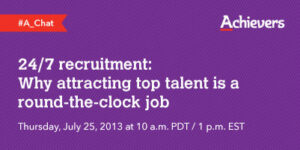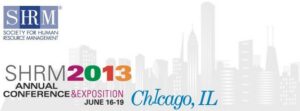
The 3 “Rs” of Hiring “A” Players
Does talent acquisition seem like a vicious cycle at your company? For sustainable results, try an approach that integrates 3 elements

Does talent acquisition seem like a vicious cycle at your company? For sustainable results, try an approach that integrates 3 elements

What does it take to attract top talent in today’s world of work? Save the date for a special webinar with experts from Achievers and TalentCulture!

What can today’s graduates expect as they enter the work world? The TalentCulture community talked about this and more during a whirlwind week at #SHRM13…

How can we create a more engaging experience for tomorrow’s workforce? And what do today’s graduates see ahead in their careers? We’ll explore this and more, LIVE at SHRM13. Join us!

When designing an organizational workspace, it’s essential to think from the “inside” out. Why? Thoughts from an employee recognition expert…

Is your organization facing barriers that stand in the way of employee engagement? Try these tips to overcome 6 key obstacles. (Includes infographic.)

When you put the right information in the hands of business managers, Employee Success will follow. Consider these 3 ways to make it happen…

It’s official! TalentCulture is partnering with Achievers to expand and enhance the “world of work” mission. What does this mean for talent-minded professionals everywhere?